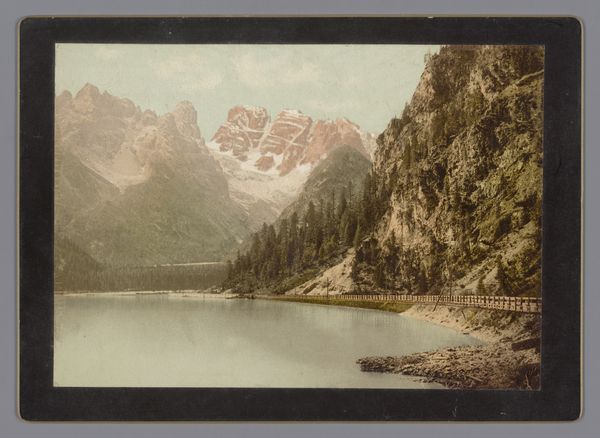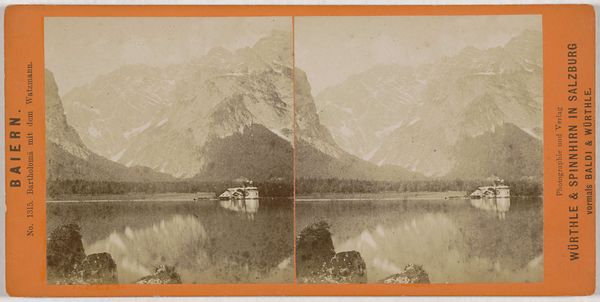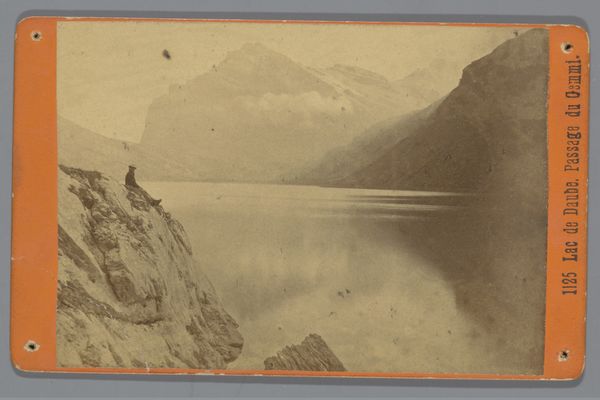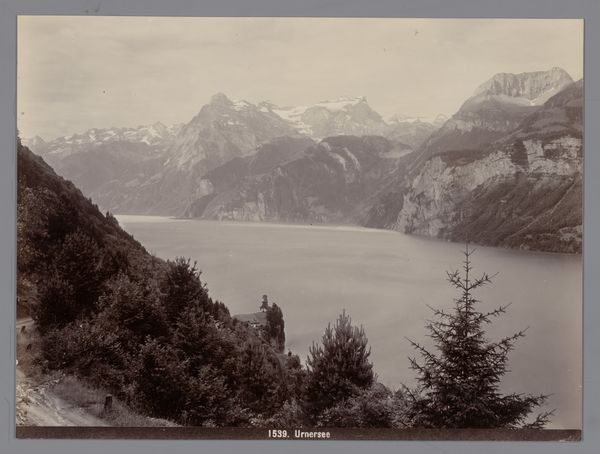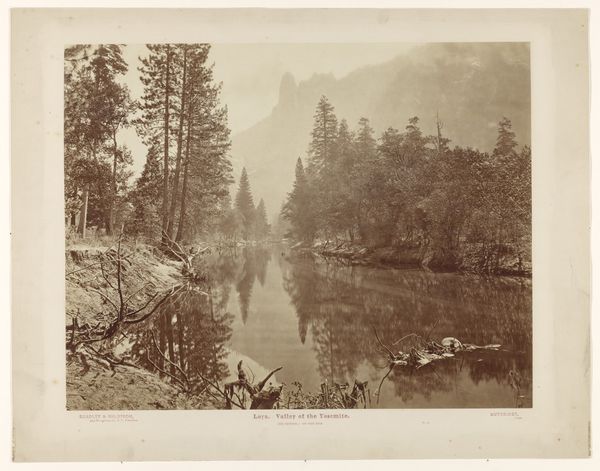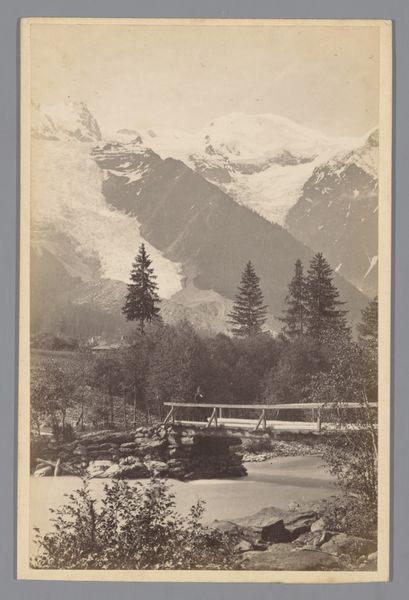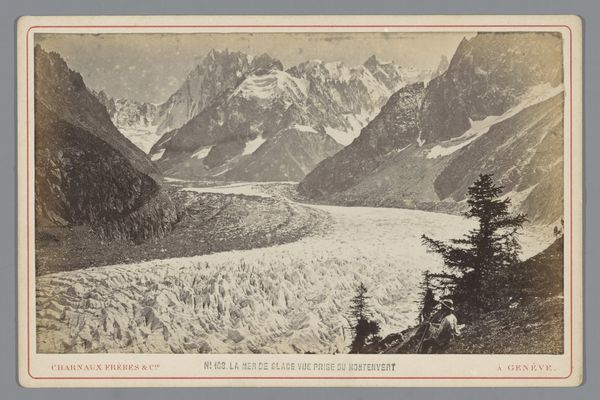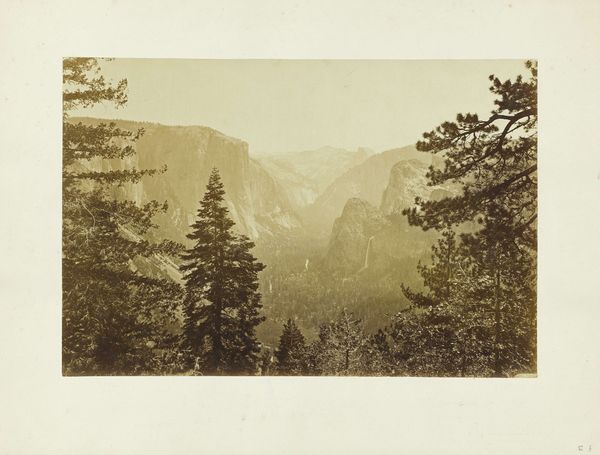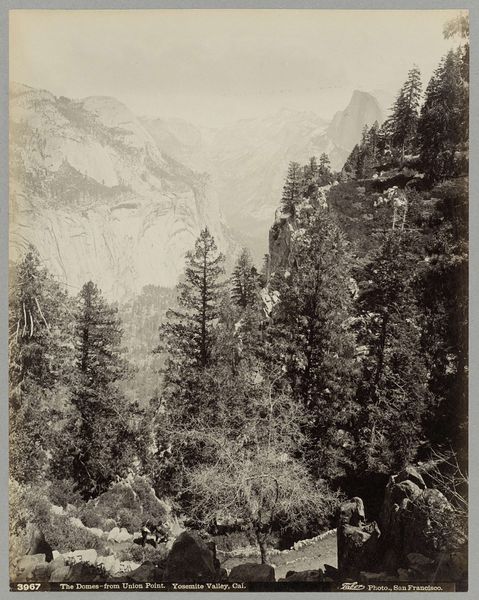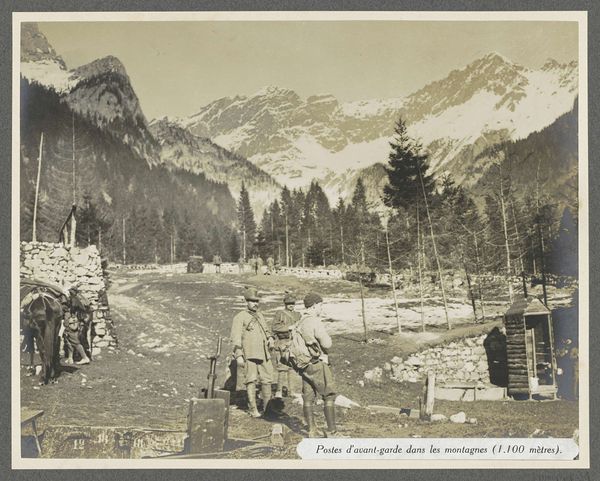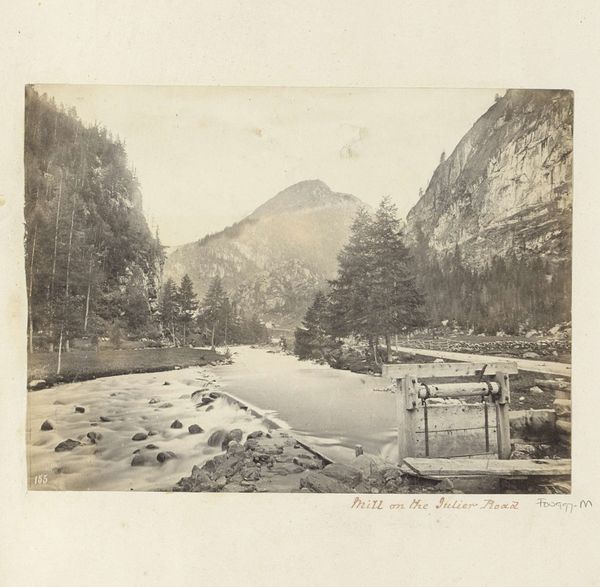
Dimensions: height 106 mm, width 158 mm
Copyright: Rijks Museum: Open Domain
Curator: Here we have "Gezicht op de Königssee in Beieren, Duitsland," a captivating photograph likely taken between 1850 and 1900 by the studio of Baldi & Würthle. The scene presents the Königssee lake nestled amidst the Bavarian Alps. Editor: My first impression is one of profound tranquility. The composition is remarkably balanced, drawing the eye gently from the rocky foreground, across the placid lake surface, up to the towering, snow-dusted peaks. It's a serene vista, imbued with a certain timelessness. Curator: Absolutely. The albumen or gelatin silver print exemplifies the Romantic era's fascination with sublime natural landscapes. It provided a tangible way for an expanding middle class to connect with monumental scenery—offering access to experiences previously reserved for elites who went on their grand tours. Editor: It's intriguing how the almost monochromatic palette enhances the image’s structural elements. The interplay of light and shadow across the mountain faces, and within the reflected surfaces, contributes to an incredible sense of depth and volume. The texture becomes the message. Curator: Consider also the historical context of photographic practice during this period. The act of photographing and circulating these images bolstered Germany's cultural identity, particularly by associating it with sublime alpine scenery. Photography participated actively in nation-building efforts. Editor: Yes, and I appreciate that we get all this national sentiment captured via technical means. Notice how these imposing pines anchor the foreground? They function almost like stage wings, framing the vista and creating a strong sense of perspective. Semiotically, these elements connote stability. Curator: Indeed. The seemingly objective eye of the camera serves socio-cultural ends here. Mass-produced prints like these fostered an idea of natural splendor to which people presumably could visit if not directly associate with as "German." Editor: Thinking about the totality, I believe the success here stems from a unified application of pictorial elements that elicit a kind of Romantic, almost melancholic, appreciation. I notice this melancholic sense as a recurring form in romanticism’s emphasis on nature’s beauty and transience. Curator: Your comments certainly show us ways to consider the work and how its production fed into societal and institutional frameworks of the time. Editor: And perhaps my remarks encourage close observation of visual language, leading to a deeper, perhaps personally poignant connection with the photograph itself.
Comments
No comments
Be the first to comment and join the conversation on the ultimate creative platform.
